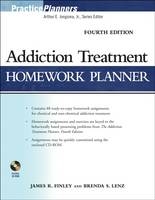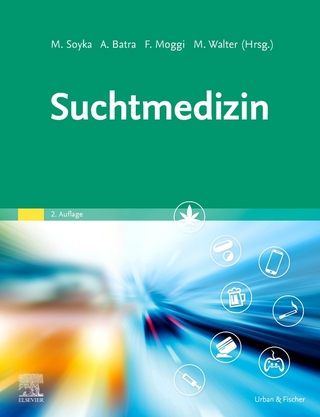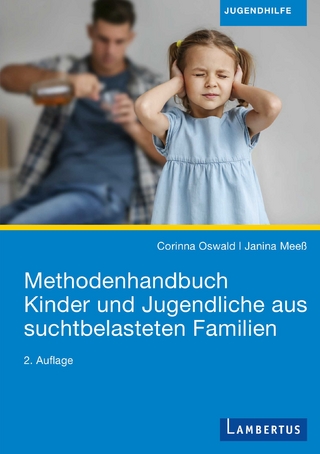
Addiction Treatment Homework Planner
John Wiley & Sons Ltd (Verlag)
978-0-470-40274-0 (ISBN)
- Titel ist leider vergriffen;
keine Neuauflage - Artikel merken
James R. Finley, MA, is a practicing psychotherapist with experience in a variety of community and correctional settings, outpatient and inpatient. He is the author of Integrating the 12 Steps into Addiction Therapy and coauthor of The Addiction Counselor's Documentation Sourcebook, Second Edition, both published by Wiley. Brenda S. Lenz, MS, is a licensed professional counselor and certified substance abuse counselor. She specializes in treating addictions in women and college-aged students and is coauthor of The Addiction Counselor's Documentation Sourcebook, Second Edition, published by Wiley. She currently works in a university counseling center and in private practice.
Practice Planner(R) Series Preface. Preface. SECTION I: Adult-Child-of-an-Alcoholic (ACOA) Traits. Exercise I.A Understanding Codependent Behaviors. Exercise I.B Understanding Family History. SECTION II: Anger. Exercise II.A Is My Anger Due to Feeling Threatened? Exercise II.B Is My Anger Due to Unmet Expectations? SECTION III: Antisocial Behavior. Exercise III.A Alternatives to Addictive Behavior. Exercise III.B Taking Daily Inventory. SECTION IV: Anxiety. Exercise IV.A Coping with Stress. Exercise IV.B My Anxiety Profile. SECTION V: Attention Deficit Disorder, Inattentive Type (ADD). Exercise V.A Getting Organized. Exercise V.B Negotiating Skills for Success. SECTION VI: Attention Deficit/Hyperactivity Disorder (ADHD). Exercise VI.A From Recklessness to Calculated Risks. Exercise VI.B Learning to Self-Soothe. SECTION VII: Borderline Traits. Exercise VII.A Forming Stable Relationships. Exercise VII.B Seeing That We're All Just Human. SECTION VIII: Childhood Trauma. Exercise VIII.A Corresponding with My Childhood Self. Exercise VIII.B Setting and Maintaining Boundaries. SECTION IX: Chronic Pain. Exercise IX.A Alternative Methods for Managing Pain. Exercise IX.B Coping with Addiction and Chronic Pain. SECTION X: Dangerousness/Lethality. Exercise X.A Anger as a Drug. Exercise X.B Respect or Fear? SECTION XI: Dependent Traits. Exercise XI.A Building My Support Network. Exercise XI.B How Independent Am I? SECTION XII: Depression. Exercise XII.A Correcting Distorted Thinking. Exercise XII.B What's Happening in My Early Recovery? SECTION XIII: Eating Disorders. Exercise XIII.A Creating a Preliminary Health Plan. Exercise XIII.B Eating Patterns Self-Assessment. SECTION XIV: Family Conflicts. Exercise XIV.A Creating a Family Ritual. Exercise XIV.B Identifying Conflict Themes. SECTION XV: Gambling. Exercise XV.A Understanding Nonchemical Addictions. Exercise XV.B What Price Am I Willing to Pay? SECTION XVI: Grief/Loss Unresolved. Exercise XVI.A Am I Having Difficulty Letting Go? Exercise XVI.B Moving on with My Life. SECTION XVII: Impulsivity. Exercise XVII.A A Different Approach. Exercise XVII.B Handling Crisis. SECTION XVIII: Legal Problems. Exercise XVIII.A Handling Tough Situations in a Healthy Way. Exercise XVIII.B What's Addiction Got to Do with My Problems? SECTION XIX: Living Environment Deficiency. Exercise XIX.A Assessing My Needs. Exercise XIX.B What Would My Ideal Life Look Like? SECTION XX: Mania/Hypomania. Exercise XX.A Coping with Addiction and Mood Disorders or Bereavement. Exercise XX.B Early Warning Signs of Mania/Hypomania. SECTION XXI: Medical Issues. Exercise XXI.A Coping with Addiction and Other Medical Problems. Exercise XXI.B Physical and Emotional Self-Care. SECTION XXII: Narcissistic Traits. Exercise XXII.A Being Genuinely Unselfish. Exercise XXII.B Getting Out of Myself. SECTION XXIII: Nicotine Dependence. Exercise XXIII.A Avoiding Nicotine Relapse Triggers. Exercise XXIII.B Use of Affirmations for Change. SECTION XXIV: Occupational Problems. Exercise XXIV.A Barriers and Solutions. Exercise XXIV.B Interest and Skill Self-Assessment. SECTION XXV: Opioid Dependence. Exercise XXV.A Making Change Happen. Exercise XXV.B A Working Recovery Plan. SECTION XXVI: Oppositional Defiant Behavior. Exercise XXVI.A Analyzing Acting-Out Behavior. Exercise XXVI.B Learning to Ask Instead of Demand. SECTION XXVII: Parent-Child Relational Problem. Exercise XXVII.A Am I Teaching My Children Addictive Patterns? Exercise XXVII.B What Do I Want for My Children? SECTION XXVIII: Partner Relational Conflicts. Exercise XXVIII.A Communication Skills. Exercise XXVIII.B Identifying Proven Problem-Solving Skills. SECTION XXIX: Peer Group Negativity. Exercise XXIX.A What Do I Need and How Do I Get It? Exercise XXIX.B What Do Others See Changing? SECTION XXX: Posttraumatic Stress Disorder (PTSD). Exercise XXX.A Coping with Addiction and PTSD or Other Anxiety Disorders. Exercise XXX.B Safe and Peaceful Place Meditation. SECTION XXXI: Psychosis. Exercise XXXI.A Coping with Addiction and Thought Disorders. Exercise XXXI.B Planning for Stability. SECTION XXXII: Relapse Proneness. Exercise XXXII.A Early Warning Signs of Relapse. Exercise XXXII.B Identifying Relapse Triggers and Cues. Exercise XXXII.C Relapse Prevention Planning. SECTION XXXIII: Self-Care Deficit as a Primary Problem. Exercise XXXIII.A Assessing Self-Care Deficits. Exercise XXXIII.B Relating Self-Care Deficits to My Addiction. SECTION XXXIV: Self-Care Deficit as a Secondary Problem. Exercise XXXIV.A Filling in the Gaps. Exercise XXXIV.B Working toward Independence. SECTION XXXV: Sexual Promiscuity. Exercise XXXV.A Is It Romance or Is It Fear? Exercise XXXV.B Working through Shame. SECTION XXXVI: Social Anxiety. Exercise XXXVI.A Understanding My Defense Mechanisms. Exercise XXXVI.B Using My Support Network. SECTION XXXVII: Spiritual Confusion. Exercise XXXVII.A Understanding Spirituality. Exercise XXXVII.B What Do I Believe In? SECTION XXXVIII: Substance Abuse/Dependence. Exercise XXXVIII.A Balancing Recovery, Family, and Work. Exercise XXXVIII.B Consequences of Continuing Addictive Lifestyles. Exercise XXXVIII.C Personal Recovery Planning. Exercise XXXVIII.D Problem Identification. Exercise XXXVIII.E What Does Addiction Mean to Me? SECTION XXXIX: Substance-Induced Disorders. Exercise XXXIX.A Identifying and Using Community Resources. Exercise XXXIX.B Planning Aftercare. SECTION XL: Substance Intoxication/Withdrawal. Exercise XL.A Coping with Post-Acute Withdrawal. Exercise XL.B Using Books and Other Media Resources. SECTION XLI: Suicidal Ideation. Exercise XLI.A What Did I Want to Be When I Grew Up? Exercise XLI.B Why Do I Matter and Who Cares? SECTION XLII: Treatment Resistance. Exercise XLII.A How Far Have I Come? Exercise XLII.B Setting and Pursuing Goals in Recovery. Appendix A: Additional Assignments for Presenting Problems. Appendix B: Stages of Change. Appendix C: ASAM Adult Patient Placement Criteria Dimensions. Appendix D: Suggested Addiction Homework Treatment Plan Exercises, ASAM Dimensions, and ASAM Levels of Care. About the CD-ROM.
| Erscheint lt. Verlag | 28.8.2009 |
|---|---|
| Reihe/Serie | PracticePlanners |
| Verlagsort | Chichester |
| Sprache | englisch |
| Maße | 216 x 278 mm |
| Gewicht | 934 g |
| Themenwelt | Medizin / Pharmazie ► Medizinische Fachgebiete ► Suchtkrankheiten |
| ISBN-10 | 0-470-40274-1 / 0470402741 |
| ISBN-13 | 978-0-470-40274-0 / 9780470402740 |
| Zustand | Neuware |
| Informationen gemäß Produktsicherheitsverordnung (GPSR) | |
| Haben Sie eine Frage zum Produkt? |
aus dem Bereich



